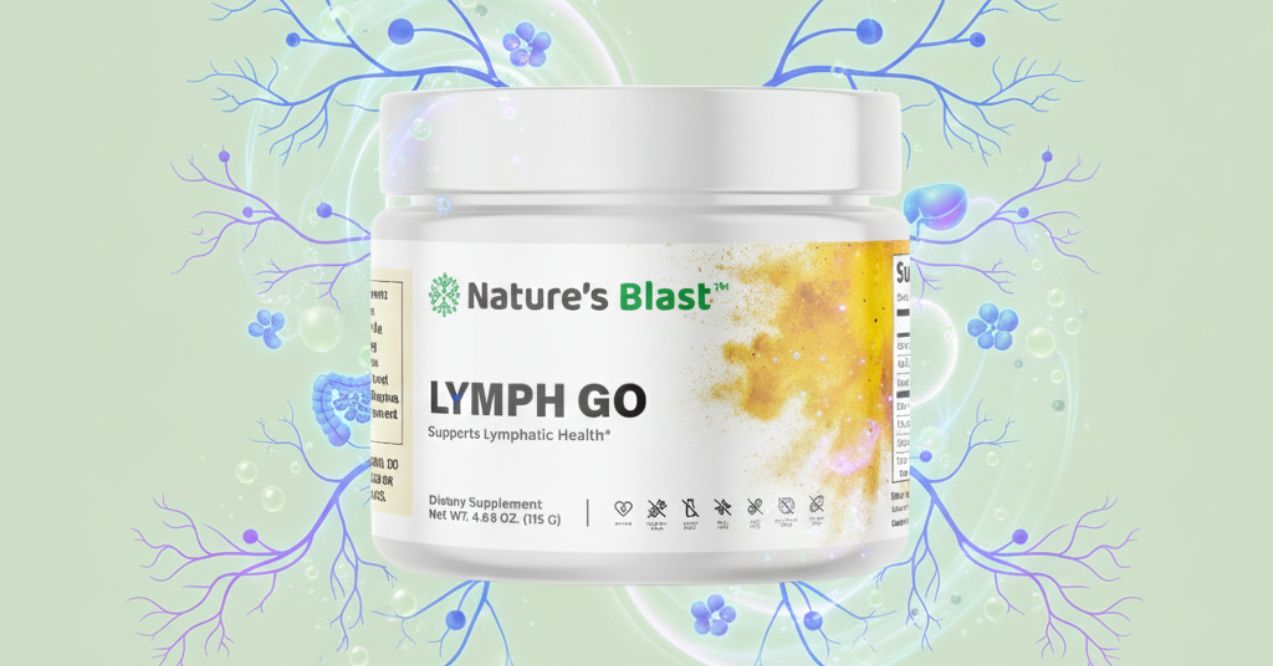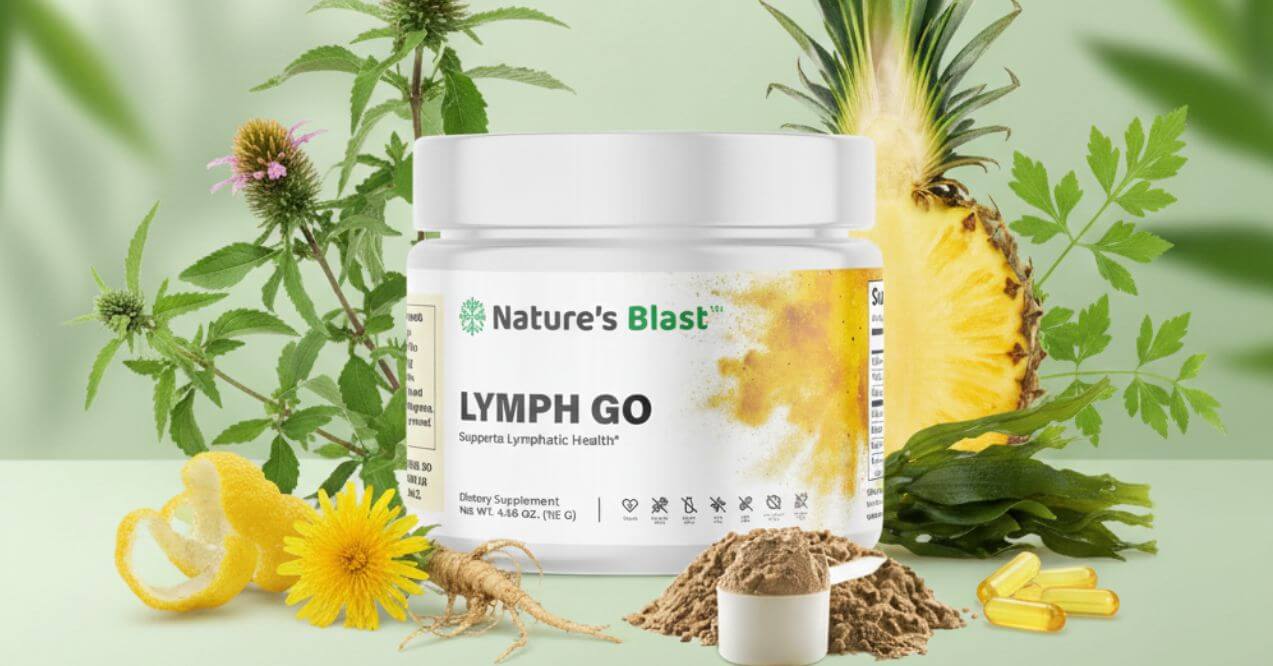The Impact Of Red Light Therapy for Lymphatic Drainage
Medically reviewed by our experts
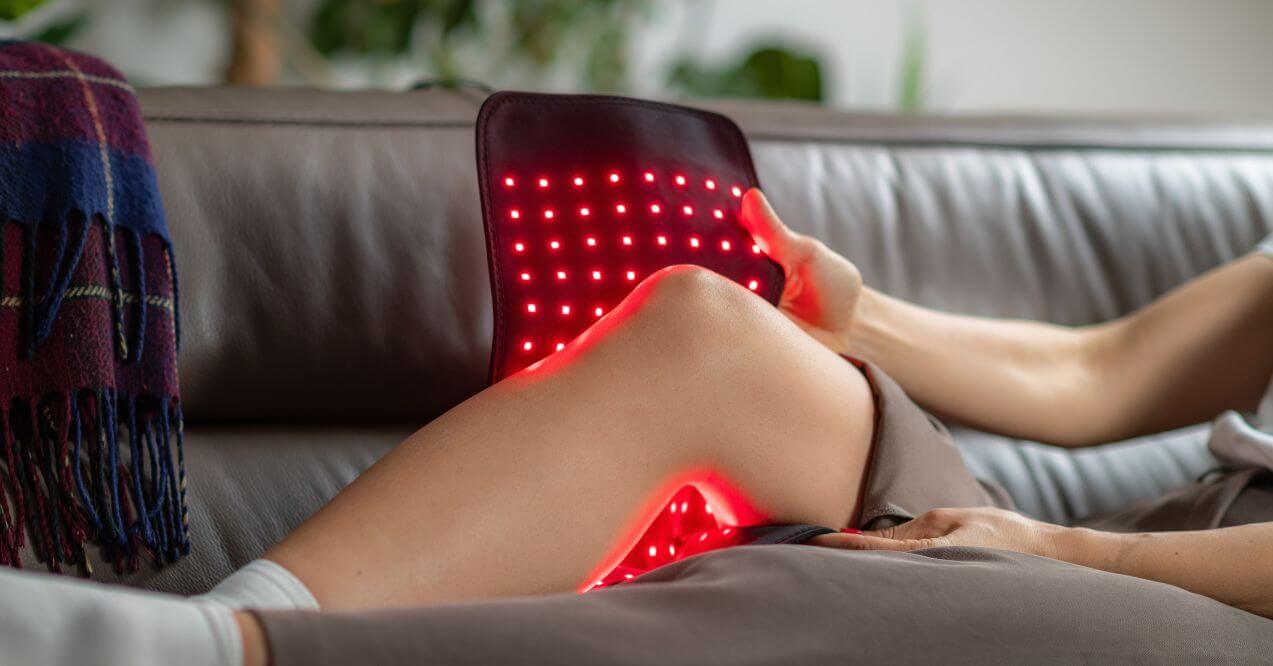

Ever notice persistent puffiness, fluid buildup, or a heavy, sluggish feeling in your body? These may be subtle signs pointing to an often-overlooked network – the lymphatic system. Acting as your body’s internal drainage network, it plays a key role in clearing waste and maintaining fluid balance. When this system slows down, discomfort can follow.
Solution? Red light therapy for lymphatic drainage – a non-invasive, natural approach designed to support lymph flow and cellular vitality. But does it work? In this blog, we’ll uncover how red light therapy works, what science reveals about its lymphatic benefits, and how you can use it effectively at home for enhanced support.
What is Red Light Therapy?
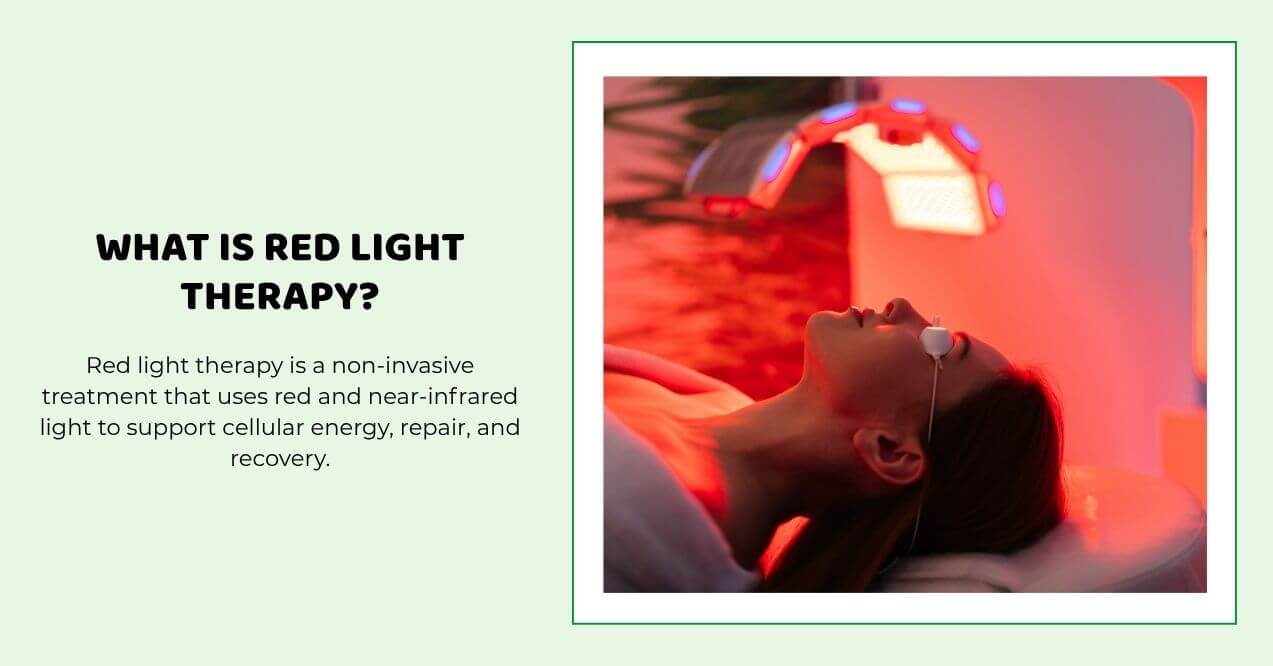
Red light therapy is a non-invasive wellness technique that uses specific wavelengths of light to support cellular energy and natural recovery processes. It typically involves red (600–660 nanometers) and near-infrared (800–850 nanometers) light, which can penetrate the skin and reach deeper tissues.
The science behind red light therapy is called photobiomodulation. This process works by stimulating the mitochondria – often referred to as the “powerhouses” of your cells. Here’s how it functions:
- Light absorption – Red and near-infrared light is absorbed by a key mitochondrial enzyme called cytochrome c oxidase.
- ATP production – This activation boosts the production of adenosine triphosphate (ATP), the molecule that fuels almost every cellular process.
- Enhanced cellular function – With increased ATP, cells gain the energy needed to perform tasks like repair, waste removal, and fluid regulation more efficiently.
LED vs. Laser Devices
In the early stages of red light therapy, laser devices were the primary tool. These lasers targeted small, precise areas but required professional oversight due to their intensity. Modern LED-based devices have since made red light therapy more accessible, offering broader coverage and enhanced safety for home use.
Here’s a quick comparison:
| Feature | Laser Devices | LED Devices |
| Light Coverage | Small, focused beam | Broad, wide-area coverage |
| Safety Profile | Requires professional supervision | Safe for at-home use with minimal risk of overexposure |
| Penetration & Effectiveness | Highly concentrated, deep penetration | Effective when using correct wavelengths and dosage |
| Ease of Use | Typically used in clinical settings | User-friendly and designed for daily home routines |
| Application Area | Best for targeting small, specific spots | Ideal for treating larger body regions |
Why is Red Light Therapy Good for Lymphatic Drainage?
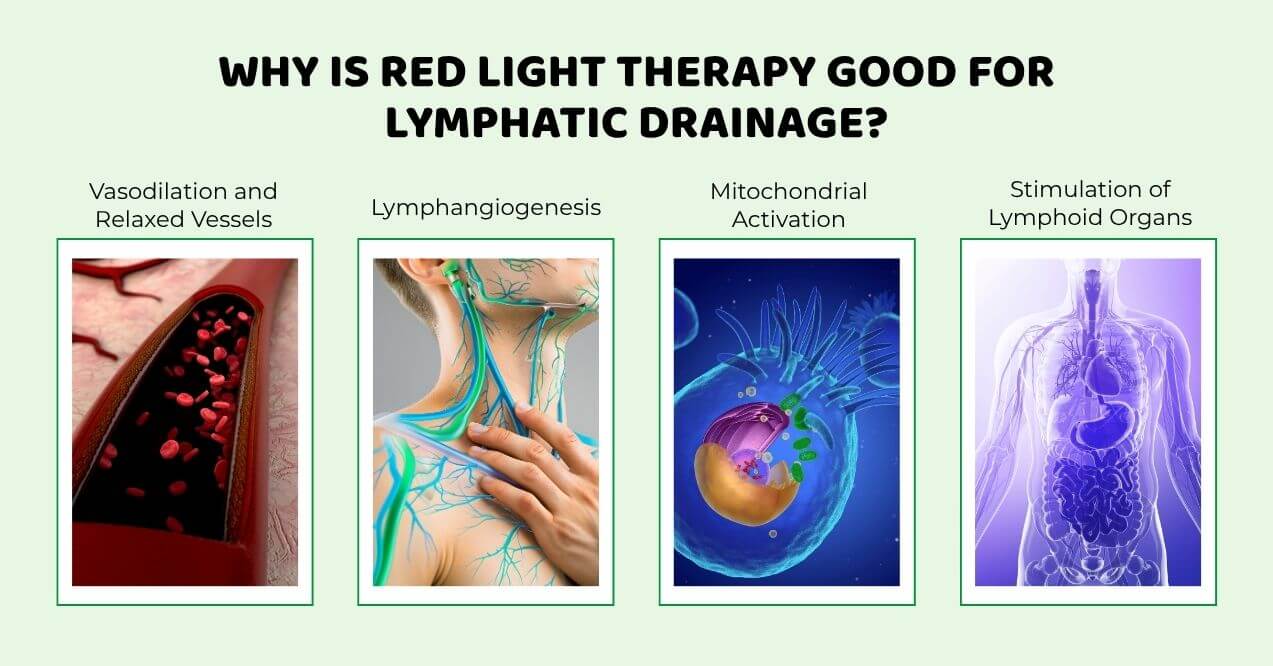
Supporting healthy lymphatic flow requires promoting vessel flexibility, cellular energy, and efficient fluid movement. Red light lymphatic drainage techniques work on multiple biological levels to encourage these natural processes. Some people also combine massage with light therapy, though it’s smart to ask Are There Lymphatic Massage Dangers? before trying both together.
Looking at lymphatic drainage massage before and after results can help set realistic expectations when considering how red light therapy might complement traditional approaches.
Below are key mechanisms that explain the benefits of red light therapy for lymphatic drainage.
1. Vasodilation and Relaxed Vessels
One way red light therapy supports lymphatic flow is by promoting vasodilation, the relaxation of vessel walls. When lymphatic vessels relax, fluid moves more freely through the network. This effect is largely due to the release of nitric oxide, a natural compound that:
- Relaxes smooth muscle tissue surrounding lymphatic and blood vessels
- Enhances circulation and reduces vessel tension
- Supports improved fluid mobility and drainage pathways
By enhancing circulation and reducing vessel tension, red light helps improve lymph mobility and supports drainage – making it a promising tool for red light therapy for lymphedema management at home.
2. Lymphangiogenesis
Another benefit of red light therapy for lymphatic drainage is its potential to stimulate lymphangiogenesis – the formation of new lymphatic vessels. This is especially helpful when existing drainage pathways are restricted. Red and near-infrared wavelengths may:
- Encourage growth of additional lymphatic vessels
- Support alternative routes for lymphatic fluid movement
- Help maintain effective drainage when natural flow is compromised
This vessel expansion strengthens the body’s ability to manage fluid balance.
3. Mitochondrial Activation
Red and near-infrared light stimulate mitochondria to produce more adenosine triphosphate (ATP), the energy currency of cells. This energy boost enhances the activity of:
- Lymphatic endothelial cells (lining lymph vessels)
- Immune cells traveling through the lymph
- Surrounding tissues responsible for fluid absorption and waste handling
With higher ATP production, these cells can support natural lymphatic functions more efficiently, making red light lymphatic drainage methods highly effective for wellness routines.
4. Stimulation of Lymphoid Organs
Applying red light therapy over lymphoid-rich areas – such as the thymus, spleen, and lymph nodes – may help preserve their function as they age. Red light’s energizing effect may:
- Support immune cell development in the thymus
- Encourage optimal filtration of lymph fluid in lymph nodes
- Help maintain the vitality of lymphatic tissues that tend to decline with age
Regular stimulation of these regions adds another layer of support for a healthy lymphatic system.
How to Use Red Light Therapy for Lymphatic Support
Incorporating red light therapy for lymphatic drainage into your wellness routine is simple, but using the right tools and techniques makes a significant difference. The goal is to stimulate lymph flow gently and consistently, giving your body the support it needs to maintain fluid balance and tissue vitality. Here’s how to get started.
Choosing the Right Device

To get the most benefit, choose a device that emits both red (600–660nm) and near-infrared (800–850nm) wavelengths. This full-spectrum approach ensures light reaches both surface tissues and deeper lymphatic structures.
Device options include:
- LED Panels – Great for covering larger surface areas like legs, abdomen, or back.
- Wearable Wraps or Pads – Ideal for portability and targeting specific areas like the neck or arms.
Ensure the device specifies its wavelength range to guarantee you’re getting effective light exposure.
Frequency and Application
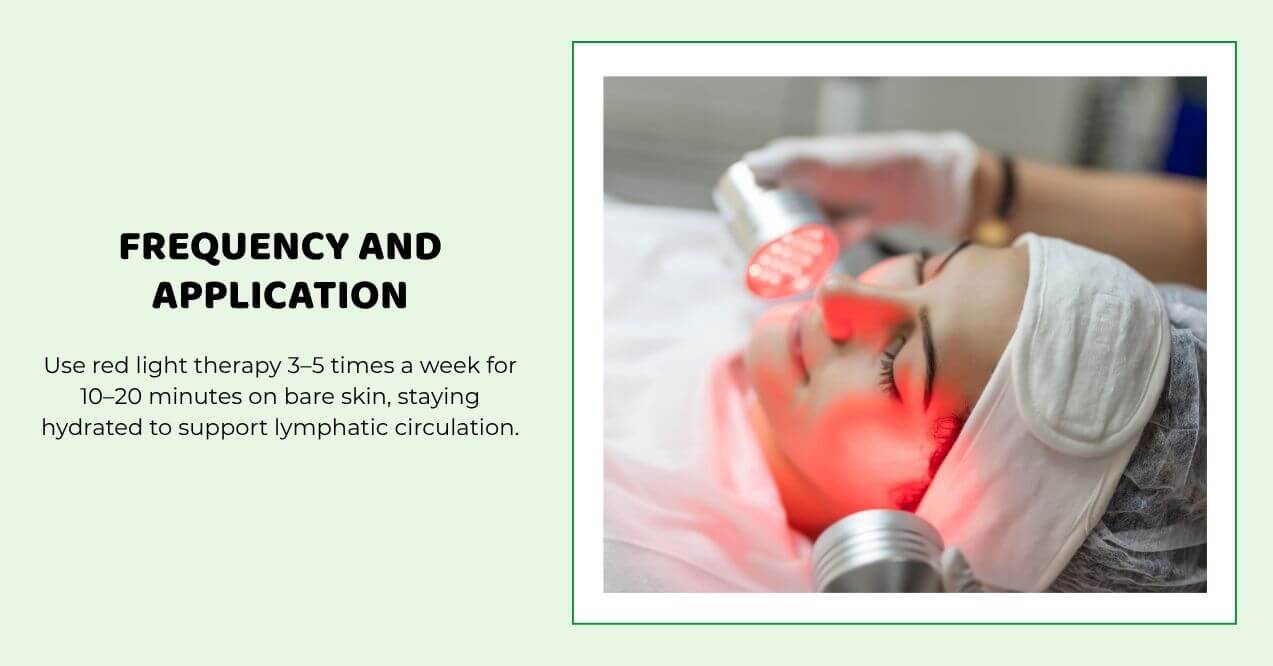
For best results, aim to use red light therapy consistently throughout the week:
- Frequency – 3 to 5 times per week
- Session Length – 10 to 20 minutes per target area
- Contact – Keep the device close to or directly on bare skin
- Hydration – Drink water before and after sessions to support lymph fluid movement
These steps create the ideal environment for promoting lymphatic circulation and enhancing the natural drainage process.
Best Practices
Where you apply red light therapy can influence how effectively it supports lymphatic flow. Focus on key drainage zones where lymph nodes and fluid pathways are concentrated:
- Neck and Underarms – Target lymph nodes located near the surface to support upper-body drainage.
- Legs – Apply after prolonged sitting or standing to assist with fluid mobility and reduce tissue heaviness.
- Abdomen – Focus on this area to support natural detox pathways and abdominal lymphatic drainage.
- Back of the Knees – Apply light to the lymph nodes behind knee to support drainage from the lower legs.
Consistency and gentleness are key. Red light therapy works best as a gradual, supportive practice. Long-term benefits are seen with regular use over weeks and months, not through intense or aggressive treatments.
Blending Supplementation with Red Light Therapy
While red light therapy supports lymphatic movement externally by encouraging vessel flexibility and flow, internal support is equally important. Certain nutrients can help maintain the body’s fluid balance, support tissue integrity, and promote an environment where the lymphatic system can thrive.
This holistic approach to wellness can even help with specific issues like lymphatic acne, as a sluggish lymphatic system can contribute to breakouts.
Key ingredients to look for include:
- Dandelion – Traditionally used to support water movement and fluid balance.
- Cranberry – Known for supporting the health of tissue linings and urinary pathways.
- Magnesium – Aids in muscle relaxation and supports proper hydration.
- Curcumin (from turmeric) – Helps balance the body’s inflammatory activity.
- Bioflavonoids – Natural compounds that promote healthy circulation and vascular function.
Additionally, some people incorporate natural practices like using lemon peels to help with lymphatic drainage, as citrus peels contain bioactive compounds believed to support gentle detoxification and fluid balance. Others turn to essential oils for lymphatic drainage as a complementary option, since certain plant-based oils may further encourage circulation and fluid movement when used during massage.
For a curated selection of clean, high-quality lymphatic drainage supplements, Nature’s Blast offers a dedicated collection crafted to support your body’s natural detox and fluid balance. Formulas like Lymph Go feature powerful botanicals including cleavers herb, red root, dandelion, and burdock root – ingredients traditionally used to encourage lymph flow, fluid regulation, and detoxification.

These supplements are vegan, gluten-free, and crafted with organic or wild-harvested herbs, ensuring you receive pure, potent support. When used alongside red light therapy, these supplements provide a comprehensive approach to maintaining lymphatic vitality.
Potential Side Effects and Best Practices
Red light therapy is generally considered low-risk and well-tolerated for most individuals. Its non-invasive nature makes it a safe option for supporting lymphatic flow at home. However, it’s important to use red light devices correctly to avoid minor discomforts. Some users may experience:
- Temporary skin redness or warmth
- Mild sensitivity if the light is applied too closely or for extended periods
These effects are typically short-lived and can be prevented by following simple best practices:
- Start Slow – Begin with shorter sessions (5–10 minutes) and gradually increase as your body adapts.
- Protect Your Eyes – Always wear protective goggles when using red light near the face, neck, or chest areas.
- Avoid Overuse – Stick to the manufacturer’s recommended session durations and frequencies to prevent overexposure.
- Consult When Needed – Individuals who are pregnant, sensitive to light, or managing specific health concerns should consult a healthcare provider before starting red light therapy.
Conclusion
Red light therapy for lymphatic drainage offers a gentle and effective way to support your body’s natural fluid balance through vessel relaxation, enhanced cellular energy, and improved lymph flow. When combined with essential wellness practices – like staying hydrated, eating nutrient-rich foods, moving regularly, and prioritizing restorative sleep – its benefits are amplified.
For long-term vitality, consistency is key. By integrating red light therapy alongside clean supplementation and daily self-care habits, you empower your body to maintain a healthier, more balanced lymphatic system, supporting overall wellness from within.
Red and near-infrared light are the most commonly used wavelengths to support natural detoxification processes. These wavelengths penetrate deep into tissues, energizing cells and promoting fluid movement, which helps the body manage waste elimination more efficiently.
For lymphatic drainage, red light (600–660nm) and near-infrared light (800–850nm) are ideal. Red light targets surface tissues, while near-infrared reaches deeper layers, supporting vessel flexibility, circulation, and lymphatic flow.
While red light therapy for lymphatic drainage is a valuable tool, it complements rather than replaces manual techniques like MLD. Both approaches support lymphatic health in different ways – manual massage stimulates mechanical flow, while red light energizes cells and promotes vessel relaxation. Combining both methods can offer enhanced benefits.
For general lymphatic support, it’s recommended to use red light therapy 3 to 5 times per week, applying it for 10 to 20 minutes per target area. Consistency is key, and it’s best to follow a regular schedule for optimal results.
FAQ
References
